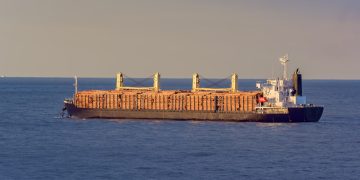LNG bunkering safety risk aspects have been discussed in a large extent. The design of safe LNG systems and operations requires a deep understanding of LNG safety aspects, accident scenarios, and development of safeguards to prevent LNG release, ignition or fire escalation.
LNG safety depends on a number of different aspects. All of them must be addressed in order to achieve the lowest risk possible. From the technical to the human element, the procedures that ensure a safe and successful operation of LNG as fuel for shipping, include 4 key areas:
- Regulations: All operational environment must comply with regulatory measures promoting safety and competitiveness.
- Risk & Safety: Key aspects of LNG risk and safety are high energy content of the LNG tank; explosion hazard; extremely low temperatures of LNG; location of LNG ship systems; hazardous vs. non-hazardous spaces; inexperienced crew; ship-shore interface in bunkering.
- Incident Reporting: Through the reporting of LNG related incidents it is possible to take lessons learned; improve the accuracy of risk; develop safety oriented behaviours calculations; improve design of equipment and systems.
- Training: It is very important that onboard crew, and port personnel, have the necessary competencies for LNG safe operation.
However, by introducing LNG to different types of ships, especially those carrying passengers like RO-PAX or cruise ships, the risk calculations, and related risk mitigation measures need to be addressed.
[smlsubform prepend=”GET THE SAFETY4SEA IN YOUR INBOX!” showname=false emailtxt=”” emailholder=”Enter your email address” showsubmit=true submittxt=”Submit” jsthanks=false thankyou=”Thank you for subscribing to our mailing list”]
Below you can find the main factors of possible LNG hazards:
- Fire, deflagration or explosion if in confined space;
- Vapour dispersion and remote flash fire;
- LNG Leaks;
- Brittle fracture of the steel structure exposed to LNG spills;
- Frost burns from liquid or cold vapour spills;
- Asphyxiation from vapour release;
- Over-pressure of transfer systems caused by thermal expansion or vaporization of trapped LNG;
- Rapid Phase Transformation (RPT) caused by LNG spilled into water;
- Boiling Liquid Expanding Vapour Explosion (BLEVE) of a pressurized tanks subjected to a fire;
- Tank over-pressurization due to rollover effects.
You can learn more information about the safety aspects of LNG in EMSA’s report “Guidance on LNG Bunkering to Port Authorities and Administrations.”
































































One becomes increasingly concerned that if LNG becomes a mainstream fuel for merchant vessels the level of risk when bunkering and general procedures utilised for containment and operation will rise to a significantly high but intolerable level. The obvious preventitive steps are crew training in hazards of handling ultra low temperature (-162C) cyrogenic products and what mitigating steps can be taken if the containment vessel leaks or is damaged due to a collision or grounding.
Safet4Sea in the article above lists these hazards, but fails to suggest an acceptable solution to overcome the risks and reduce them to a tolerable level. I have a vision of an LNG powered ro-pax vessel or cruise ship having a collision which punctures the bunker tanks – not unheard of in a collision! Can you imagine the outcome? I do not believe that there will be adequate safety training provided to the crews of these vessels to cater for such an emergency.
Perhaps someone can enlighten me of what steps are being taken to reduce the risks from a release of LNG bunkers on one of these vessels. If a significant proportion of the world fleet changes over to LNG as their fuel, the scale of this risk rises to unacceptable levels and the specialised training of crews becomes paramount. Has the industry got the capacity to train large numbers of basically educated ratings to understand these problems? I have read a number of papers by experts on this subject and they all leave me with serious doubts that the issue is being adequately addressed. Maybe I’m wrong?
Captain C Allport,
I couldn’t agree more with your comment. Ultra cold LNG fuel has zero tolerance for error or system failure. We put lifeboats on ships in recognition of the fact that sometimes things go wrong. With 5000 crew and passengers on a modern cruise ship, the potential for a LNG powered catastrophe are almost beyond comprehension……